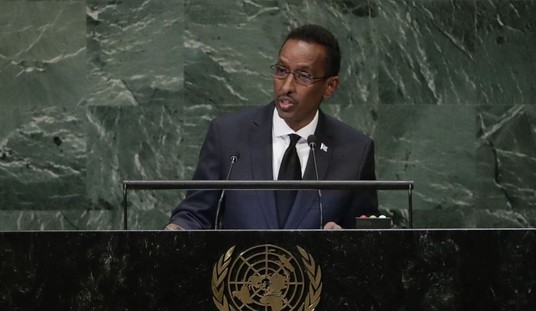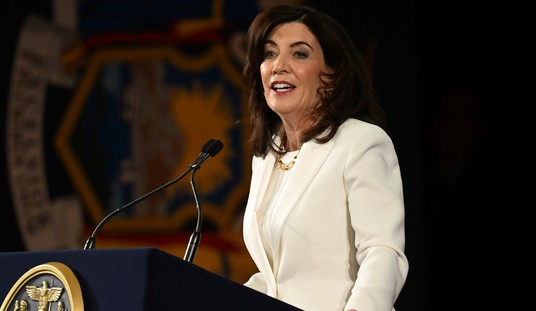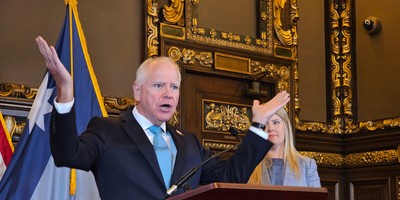The final World War II veteran to serve in the United States Senate died on the eve of the 71st anniversary of the Battle of Midway. Frank Lautenberg’s passing is significant, and every American should understand why.
Fifty-two years ago, fellow World War II vet John F. Kennedy told America that “the torch has been passed to a new generation.” That torch is now burning out; an era has ended, and many wonder if America will ever see another like it.
To try and understand, go back seven decades to the empty sea west of Hawaii in June 1942. Only a half-year before, Japanese planes had nearly wiped out the American fleet at anchor at Pearl Harbor in a brilliant surprise raid. By some miracle – the first of several – our precious carriers had been at sea and were not annihilated at their berths.
In a single morning America transformed from a nation at peace, trying to shake off the lingering Depression, into a nation at war. And no matter who won, the looming fight at Midway would be the decisive battle of the Pacific theater.
The Japanese were at their high water mark as they sent a mammoth task force of carriers and battleships to seize lonely Midway Island from the Marines who guarded it. With it in their hands, they would have ruled the Pacific. Their equipment was better, with their dreaded Zero fighters far superior to the defenders’ slap-dash collection of outdated aircraft. They outnumbered the Americans as well, and they were on a winning streak. Not long before, in the Battle of the Coral Sea, they had sunk the carrier Lexington and gravely damaged the Yorktown.
Recommended
There was no way anyone other than Americans would have stood a chance. But, as Admiral Yamamoto had foretold, it was Japanese’s grim fate to have chosen to make Americans their enemy.
The Americans knew the Imperial Navy was coming, despite the fleet’s radio silence. American codebreakers had cracked the Japanese naval ciphers. The codebreakers were independent and eccentric, dismissive of military discipline and arbitrary rules. They were entrepreneurial, quintessential Americans, brimming with vision and ideas in the days when cryptography was an art rather than a brute force exercise in supercomputing. They were cut from the same cloth as the men who would later spark the computer revolution in their California garages.
The codes did not reveal the exact Imperial Navy disposition, but the Navy was able to sortie three carriers to meet the enemy, Enterprise, Hornet and the repaired Yorktown. Yorktown had been savagely attacked less than a month before and was towed home to Hawaii. The moment it went into port the crews descended in it, working night and day to get the critical carrier ready to fight again. There was little central planning in that effort – the crews saw damage and went right to work without waiting for orders from on high. Four weeks later, because of that uniquely American initiative and hard work, Yorktown was able to sail off to its last battle.
No other people on earth could have done that.
Midway was a battle of aircraft, planes without radar or GPS or landmarks to navigate with across the vast blue ocean. American pilots flew outclassed Dauntless dive bombers and rickety Devastator torpedo planes, intermittently guarded by obsolete fighters. Alone over the water, their fuels gauges heading toward the red, again and again the pilots used their initiative to find the Japanese, knowing that they might run out of gas before they are able to return to their ships.
It was the Devastators who won the battle, but not with their torpedoes. The few torpedoes they launched failed to work, but not many even got that far. The Devastators’ air speed was heartbreakingly slow. They had to come straight in through a wall of flak from the enemy ships even as the Zeros pounced.
They were annihilated. About 90% of the torpedo planes that took part in the battle were lost. Of the 30 men and 15 aircraft of the Hornet’s Torpedo Squadron 8 (VT-8), only Ensign George Gay lived through the strike. He was rescued in the water 30 hours later.
But these men drew the enemy fighters away, and those Zeroes that returned to refuel and rearm on the crowded decks of the four Japanese carriers were still doing so as the Dauntless dive bombers arrived overhead. Heedless of the anti-aircraft fire, the bombers struck. Four Japanese carriers sank, sending to the bottom their irreplaceable crews and pilots and the Emperor’s dream of victory. They took the Yorktown with them, but not before it helped win the decisive battle of the Pacific War.
It was a long, harsh fight up to when the Missouri sailed into Tokyo Bay to accept Japan’s surrender in 1945, but after Midway there was never any doubt about how the war would end. To stave off defeat, Japan employed the kamikazes, pilots who would fly their planes into U.S. ships, choosing to die in order to inflict damage. Americans chose not death, but to fight on even at the risk of death. There is a huge difference.
(For a terrific lay history of the Battle of Midway, read Gordon Prange’s Miracle at Midway. The great Victor Davis Hanson also has a long chapter on the battle which he examines through the lens of the clashing American and Japanese cultures in his outstanding Carnage and Culture.)
Today, with the last of the World War II generation that dominated our politics for a half-century gone, it is fair to wonder whether America itself peaked somewhere in the skies over Midway. Can Americans in the future ever match the dedication, the competence, and the courage of those who broke the yoke of fascism locked on half of the world seven decades ago?
Let me report to you the answer: Yes.
I’ve served with the young Americans of today, both here at home and overseas in combat zones. I’ve led them. I’ve seen their bravery, their toughness, their humor, and their compassion.
Make no mistake: Our young warriors today are every bit the heroes their grandfathers and great-grandfathers were.
There’s no question.
Sure, in World War II, 12 million were in uniform out of a population half of today’s America, while today only about two million serve to protect over 300 million. But that’s a tribute to their success. They are proud that their sacrifice makes the service of most of their fellow citizens unnecessary.
And in Arkansas, Rep. Tom Cotton is likely to win Senator Mark Pryor’s seat in 2014. A U.S. Army paratrooper who fought in Iraq and Afghanistan, Senator Cotton will bring something special with him when he takes his place in the Senate in January 2015.
He’ll bring a torch.

























Join the conversation as a VIP Member